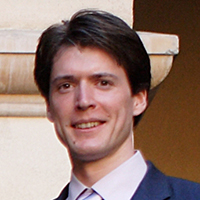
CQE PI Feature – P. Ben Dixon
Featured in QSEC March newsletter 2024
Entanglement is the key feature of quantum mechanics, and I find it shocking and exciting that it can be of practical use for emerging technology scenarios. Finding ways to connect disparate quantum mechanical systems is one of the key challenges in quantum information science and engineering. It will let us begin to piece together these systems out of the specialized academic lab environment and into deployed scenarios where large systems are engineered to enable uses such as networked quantum processors, or distributed quantum-enhanced sensor arrays. The work that I am involved in at Lincoln Laboratory is seeking to do just this.
As a child, my absolute favorite toy was Legos. The joy of simply and cleanly connecting individual Lego pieces together to make a larger overall Lego system was deeply satisfying to me. I could follow step by step instruction to build cool things (the Lego pirate ship was one of my favorites), or I could just make whatever thing popped into my head that day; I would always end up with some crazy, enormous Lego construction that I could play with in entirely new ways. The task of quantum networking feels satisfying and fun in very similar ways. Indeed, we are trying to engineer clean, simple quantum connection systems that will allow us to treat quantum technologies almost as Legos. This will enable us to develop several known networked architectures, but hopefully it will also enable the most creative among us to connect and put together quantum systems in new ways for totally new applications.
One of the most fun aspects of working in quantum networking is that, because the field is just starting to move out of purely scientific environments and into FFRDC and industry, the engineering considerations are completely new. The architectures and techniques needed to hit targets are new, the landscape is wide open, and it and allows for interesting collaborations across science and engineering disciplines. The team that I am part of involves quantum scientists, materials scientists, integrated optics fabrication engineers, thermal-mechanical engineers, packaging engineers, and system engineers, working both at Lincoln Laboratory and MIT’s main campus. As someone who has degrees in both mechanical engineering and physics, this level of interdisciplinary collaboration is certainly exciting, but also very humbling and requiring of an open mind. No one person is the expert in all of the fields involved and many times expert in one of the fields will make a point or suggestion that seems flat-out wrong to me at first glance, but in every case the point was completely correct, informed by deep expertise and years of experience.
The exciting, satisfying, and fun work that we are doing in the CQE in quantum networking is making significant impact and contributing to the very fast progress in the field currently. I’m very optimistic about what we will be able to achieve in the next several years, and I look forward to the not-too-distant day when networking together many quantum systems can be (almost) as simple as interconnecting two Lego pieces.




Copyright © 2022-2023 MIT Center for Quantum Engineering – all rights reserved – Accessibility


